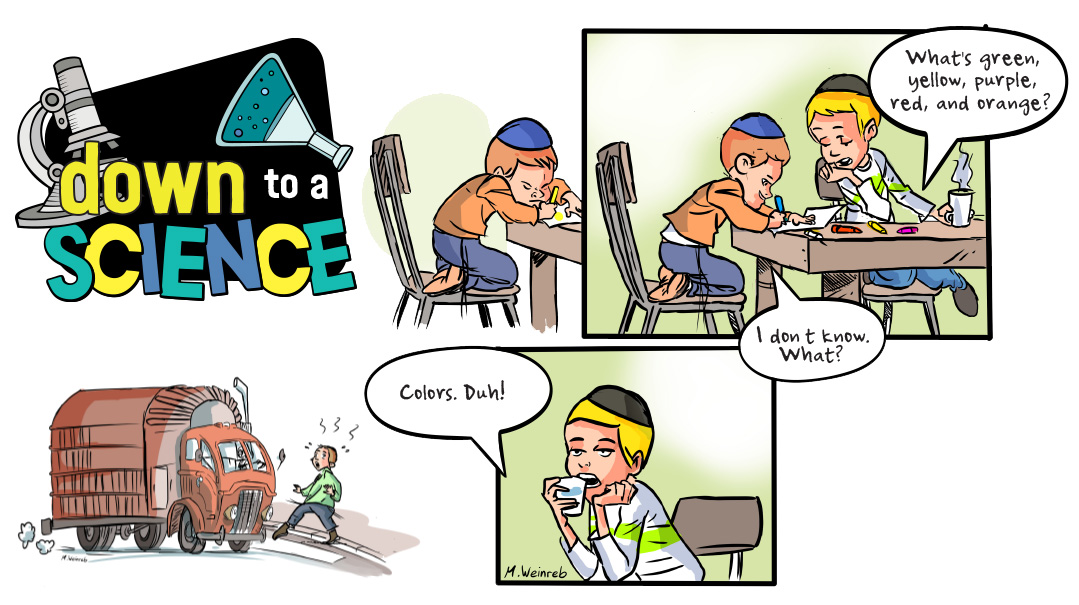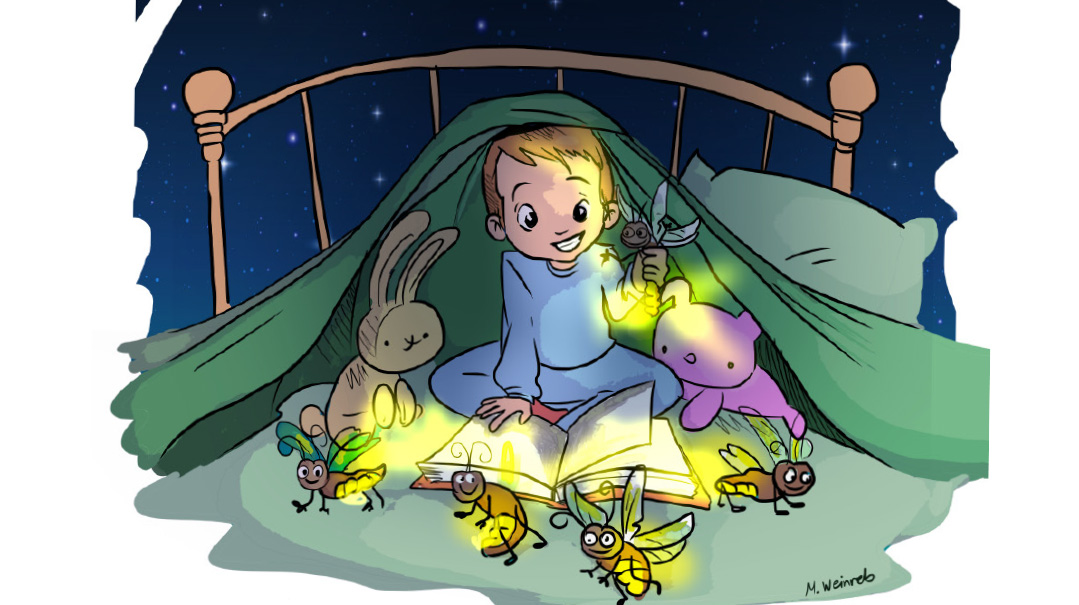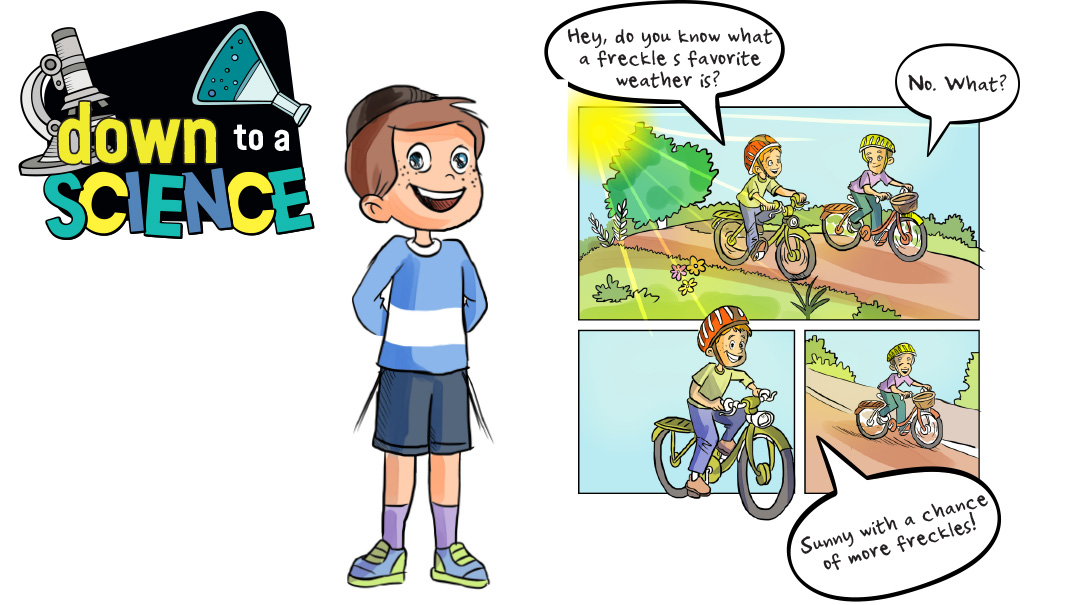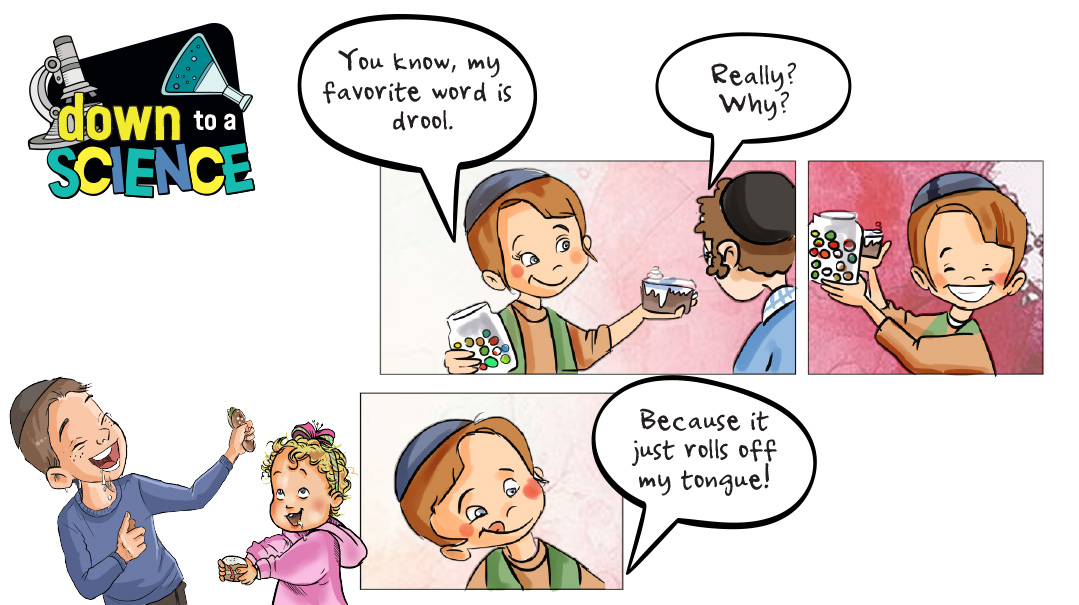What Is Color Blindness?

“But honestly, it isn’t my fault. Don’t you know I’m color-blind?”

Hello kiddos,
This is Professor Mordy Maven, Thinker, Wonderer, and Figure-Outer of all things Science-ish. What that basically means is I try really hard to figure stuff out. I do the hard work so you don’t have to!
You would not believe what just happened to me. I actually had a near-death experience. Who ever imagined that walking home from school could be so dangerous?
Here’s how it happened.
After our last class finished, the bell rang and we all piled out. I decided to walk home with Yossi instead of waiting for the bus. When we got to the crosswalk, I suddenly remembered that I hadn’t seen Avigdor, my pet tarantula, all day. I started rummaging around in my knapsack. I said to Yossi, “I’m looking for Avigdor. Let me know when the light turns green so we can cross,” and he said, “It’s green now.”
So without looking up, I stepped off the curb and almost got smashed by a cement truck. Baruch Hashem, I jumped backward just in the nick of time. Then I looked at the traffic light. “Yossi,” I screamed, “that light is redder than borscht! Why’d you tell me it was green? Are you trying to get me killed so you can inherit my lizard collection?”
Yossi looked up sheepishly, “Sorry, Mordy,” he said. “But honestly, it isn’t my fault. Don’t you know I’m color-blind?”
That’s his apology? Really? What does that even mean? I had to find out more about this color-blind thing. I left Yossi at the corner and raced home to dive into my research.
Oops! We could not locate your form.







